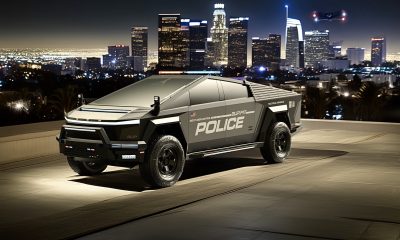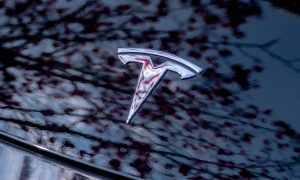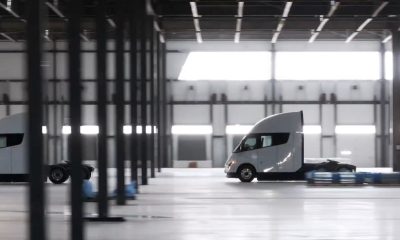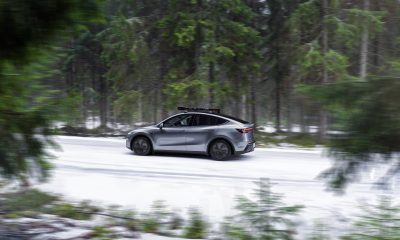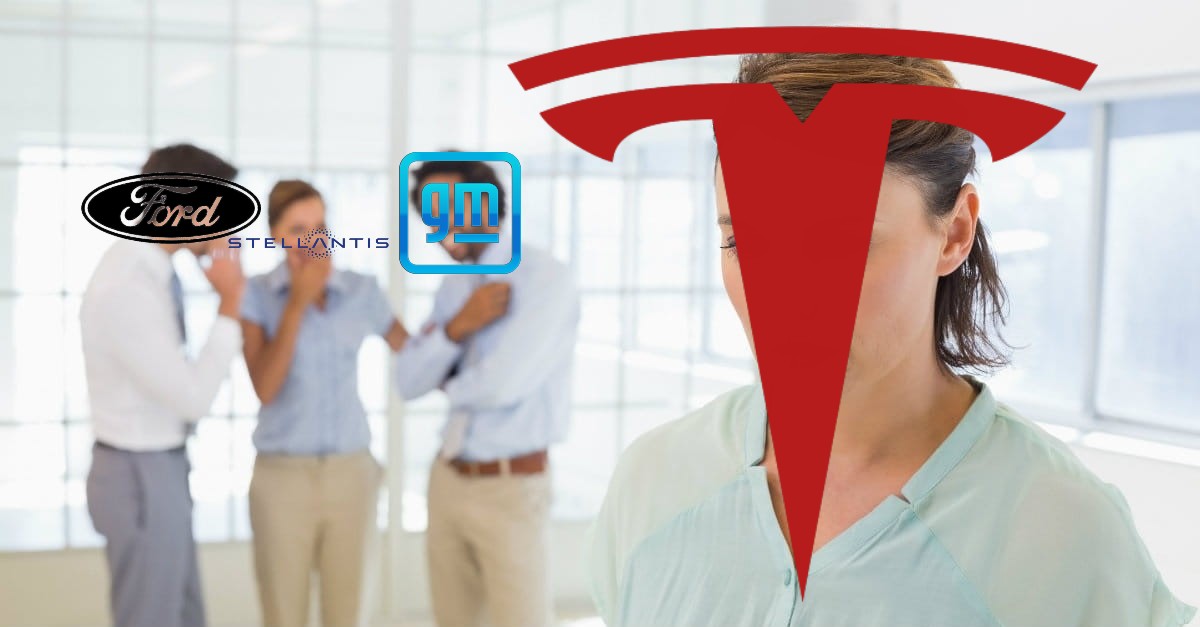

News
Tesla’s snub from White House EV event: the Pros and Cons
As the United States government continues its monumental push of domestic automakers to transition to electrification, President Joe Biden and fellow White House staff have invited companies like Ford, General Motors, and Stellantis to Washington to discuss what steps can be taken at the federal level to reach lofty EV delivery goals. However, perhaps the Biden Administration’s biggest ally, Tesla, wasn’t there because it was not extended an invitation. While CEO Elon Musk called the no-invite “odd,” there are potentially some bright spots in the situation, although the question of whether they outweigh the negatives is up to the reader to decide.
White House Electrification Event for U.S. Automakers
A relatively groundbreaking announcement that comes on the heels of President Biden’s request for legacy automakers to commit to a 40% electrified fleet by 2030, the companies agreed to a loftier but more satisfying figure of 50%. Now that half of all legacy automaker vehicles sold in 2030 will be electric, the big question is, how will it work? How will this plan be carried out?
Effectively, a game plan is likely being discussed among the White House staff and the leaders of the automakers who were invited to the event. With each company outlining specific goals through various announcements over the past several years, it is now time for action. The talking is done, a plan needs to be laid out and completed. The thing about electrification is that it is vastly different from building an ICE car, which each of these companies has long, storied, and successful histories of doing. Building an electric vehicle is a completely different project, and it goes much further than putting some electric motors and batteries in a pack and calling it an EV. There needs to be efficient and effective software, the batteries need to have a specific cell chemistry to operate for a long time, charging infrastructures need to be established, along with many other factors.
Tesla’s absence from White House EV event sidestepped in Pete Buttigieg interview
The overall issue that many of these companies have when transitioning to electrification is finding out how to make EVs operational. Far too many times, we have heard about incredible EVs that will come to the market in a few years, they are going to be amazing and effective, and they will show Tesla who is boss. But every time this has happened, these cars fall short of their mark.
The Cons: Why Tesla should be at the White House, no questions asked
Tesla has the experience to help these automakers navigate through extremely difficult times, which are likely to come based on many of these companies’ current situations with developing electric powertrains. Creating one or two vehicles and selling between thirty and fifty thousand of them definitely helps the cause. However, keeping these delivery rates and simply putting a few new bells and whistles in the interior doesn’t make it a new car. Consumers want new technology, new looks, new aesthetics. This means cars with more range, more features, and sleeker, more modern designs.
The goal should be for these automakers to develop a plan by 2030, about eight and a half years, to have four to five different electrified models on the road by that year. Rolling out that many new models while simultaneously engineering and building effective electric powertrains is extremely difficult. Many companies may find that the road to this goal is not necessarily as simple as they thought.
Ask Tesla about it.
After unveiling the Model 3, Tesla and CEO Elon Musk entered the toughest few years of Tesla’s short life.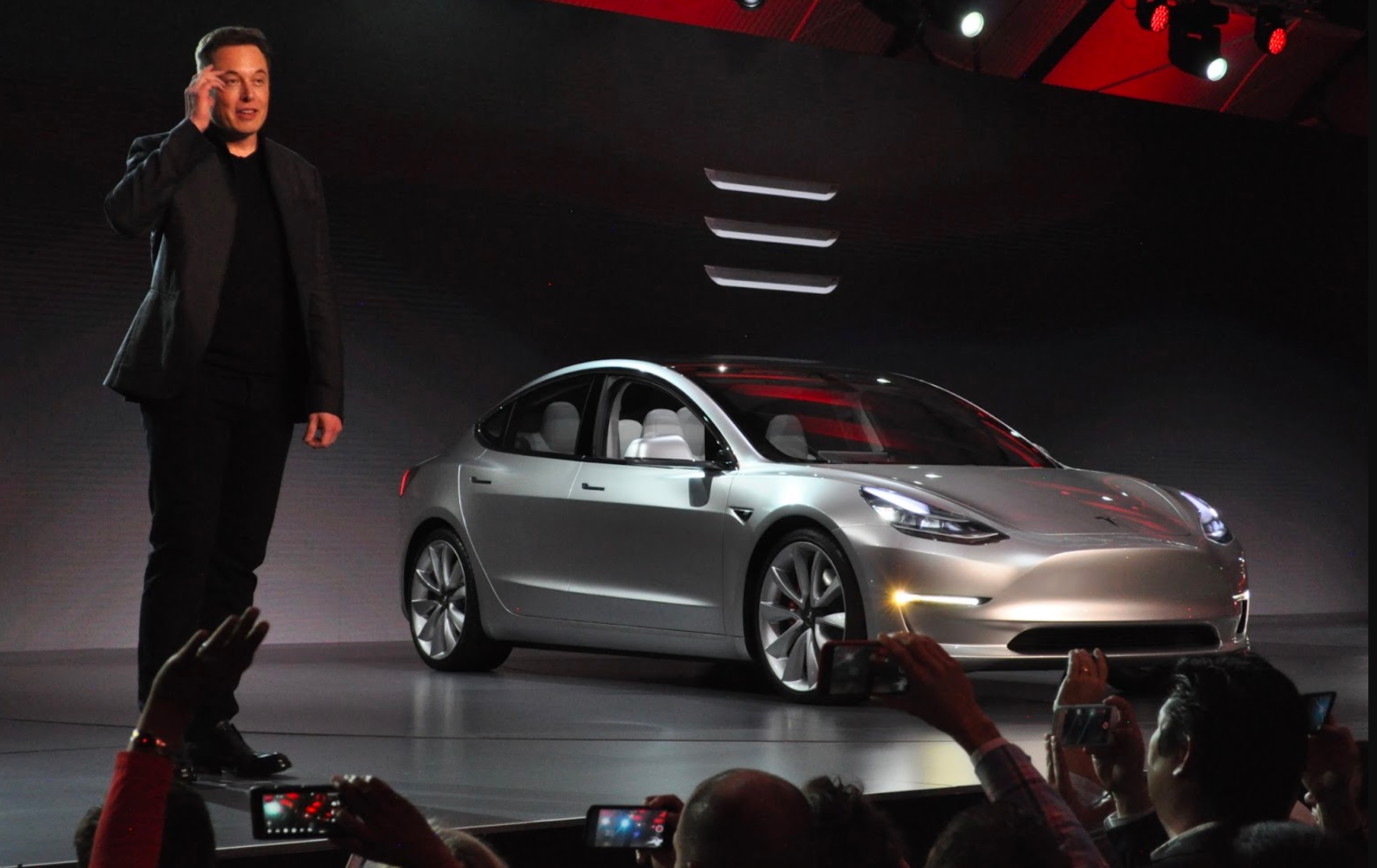
However, Tesla overcame all odds by delivering four electric models in just eight years: the Model S in 2012, the Model X in 2015, the Model 3 in 2017, and the Model Y in 2020.
Ideally, Tesla would be the biggest advantage for all of these companies from a consultant standpoint. If Tesla’s goal really is to accelerate the world’s transition to sustainable energy, it would have no issue helping car companies figure out where their shortcomings are. No technological advantages would need to be shared. Still, a roadmap of how Tesla navigated through the toughest portion of its existence by releasing popular, profitable, and effective EVs would undoubtedly help. Not to mention, these companies are much more financially stable than Tesla was while it was ramping up its production of vehicles. That would only help the cause as money really isn’t an issue.
Another negative comes from a perceptive standpoint, but it can’t be a good look for the Biden administration to go through with this event without having the industry leader there. It would be like having a tech event without Apple, an Olympic highlight reel without Phelps, a chef’s get-together without Gordon Ramsay. It just doesn’t make sense, and on top of it, it doesn’t necessarily show that the country’s leaders support Tesla’s efforts. After all, Joe Biden hasn’t uttered the word “Tesla” since he’s taken office.
The Pros: Why it might not be so bad after all
If the purpose of this event is to get automakers on board with electrification, then Tesla really would have no business being there. After all, the companies invited have pledged to have half of their vehicle deliveries be electric in 2030. Tesla already delivers only electric vehicles, and it has since day 1. Some could see it as the Straight A student going to tutoring; it’s really kind of pointless.
Additionally, it might be a good look for Tesla not to go to the event from a political standpoint. Currently, 52% of Americans disapprove of Biden’s job performance. This is according to Rasmussen, which updates the poll daily.
Tesla also does not need any assistance federally, and it does not need any entity to tell it how to handle its business. This is something that Tesla should take pride in. The hard-working giants who have ruled the automotive industry for a century need guidance on continuing to move forward.
For Tesla, the answers came through its own hard work and its own want to change the world for the better.
What do you think? Let us know in the comments below, or be sure to email me at joey@teslarati.com or on Twitter @KlenderJoey.
News
SpaceX’s Crew-11 mission targets July 31 launch amid tight ISS schedule
The flight will lift off from Launch Complex 39A at Kennedy Space Center in Florida.

NASA and SpaceX are targeting July 31 for the launch of Crew-11, the next crewed mission to the International Space Station (ISS). The flight will lift off from Launch Complex 39A at Kennedy Space Center in Florida, using the Crew Dragon Endeavour and a Falcon 9 booster.
Crew Dragon Endeavour returns
Crew-11 will be the sixth flight for Endeavour, making it SpaceX’s most experienced crew vehicle to date. According to SpaceX’s director of Dragon mission management, Sarah Walker, Endeavour has already carried 18 astronauts representing eight countries since its first mission with NASA’s Bob Behnken and Doug Hurley in 2020, as noted in an MSN report.
“This Dragon spacecraft has successfully flown 18 crew members representing eight countries to space already, starting with (NASA astronauts) Bob (Behnken) and Doug (Hurley) in 2020, when it returned human spaceflight capabilities to the United States for the first time since the shuttle retired in July of 2011,” Walker said.
For this mission, Endeavour will debut SpaceX’s upgraded drogue 3.1 parachutes, designed to further enhance reentry safety. The parachutes are part of SpaceX’s ongoing improvements to its human-rated spacecraft, and Crew-11 will serve as their first operational test.
The Falcon 9 booster supporting this launch is core B1094, which has launched in two previous Starlink missions, as well as the private Ax-4 mission on June 25, as noted in a Space.com report.
The four-members of Crew-11 are NASA astronauts Zena Cardman and Mike Fincke, as well as Japan’s Kimiya Yui and Russia’s Oleg Platonov.
Tight launch timing
Crew-11 is slated to arrive at the ISS just as NASA coordinates a sequence of missions, including the departure of Crew-10 and the arrival of SpaceX’s CRS-33 mission. NASA’s Bill Spetch emphasized the need for careful planning amid limited launch resources, noting the importance of maintaining station altitude and resupply cadence.
“Providing multiple methods for us to maintain the station altitude is critically important as we continue to operate and get the most use out of our limited launch resources that we do have. We’re really looking forward to demonstrating that capability with (CRS-33) showing up after we get through the Crew-11 and Crew-10 handover,” Spetch stated.
Lifestyle
EV fans urge Tesla to acquire Unplugged Performance for edge in fleet and security industry
Unplugged Performance has built a name for itself by producing performance upgrades for Tesla vehicles.

A growing number of Tesla enthusiasts and longtime community voices are calling on the electric vehicle maker to acquire Unplugged Performance, a California-based aftermarket company best known for tuning Tesla vehicles and developing specialized government fleet solutions under its UP.FIT division.
The idea was once considered a niche proposal among EV fans, but it is now gaining serious attention not just as a performance play but as a strategic move to deepen Tesla’s roots in the fleet and security industry.
A strategic fit
Unplugged Performance has built a name for itself by producing performance upgrades for Tesla vehicles, from track-optimized components to visual and aerodynamic upgrades. But in recent years, its UP.FIT division has pivoted toward a more functional future by outfitting Tesla vehicles like Model Ys for police, military, and government use.
That work has sparked growing calls for closer collaboration with Tesla, especially as the EV maker increasingly leans into autonomy, AI, and fleet services as core components of its next chapter.
“I posted this four years ago, but I think it’s more true now than ever,” wrote Whole Mars Catalog, a well-known Tesla investor and FSD Beta tester, on X. “Tesla should buy Unplugged. But not just as a Performance division. What they are doing with UP.FIT unlocks large government and commercial fleet purchases that can improve utilization.”
Tesla fans such as shareholder Sawyer Merritt echoed the sentiment, calling Unplugged a “great fit within Tesla.” adding, “They are literally located directly next to Tesla’s design studio in Hawthorne.”
Enabling the next wave
Supporters of the idea noted that integrating Unplugged into Tesla’s corporate structure could help accelerate the adoption of autonomous technologies in government sectors. With UP.FIT patrol cars already in use across some U.S. police departments, Tesla fans envisioned a future where self-driving Teslas could potentially revolutionize law enforcement, search-and-rescue, and public service logistics.
“Just imagine how autonomous patrol cars could transform policing and bring us into a safer future,” the veteran FSD tester wrote.
The benefits could also extend to Tesla’s existing consumer base. “They also have some incredible products in the works that I think will appeal to many ordinary Tesla drivers — not just those looking for performance or mods. Stuff that’s so good it should have come straight from the design studio next door,” Whole Mars Catalog noted.
Unplugged Performance, founded in 2013, shares not just a product vision with Tesla, but also geography. Its Hawthorne headquarters sits directly adjacent to Tesla’s design studio, and the two companies have maintained a close working relationship over the years. The aftermarket firm has long positioned itself as a “mission-aligned” partner to Tesla.
In response to the recent calls for acquisition, Unplugged Performance acknowledged the support from the community. “Our very existence is to support the Tesla mission with @UpfitTesla and @UnpluggedTesla,” Unplugged CEO Ben Schaffer posted on X. “We love working with Tesla and are grateful for the community’s support since 2013!”
News
Tesla debuts hands-free Grok AI with update 2025.26: What you need to know
All new Tesla vehicles delivered on or after July 12, 2025, will include Grok AI out of the box

Tesla has begun rolling out Grok, an in-car conversational AI assistant developed by xAI, to eligible vehicles starting July 12. The feature marks the most direct integration yet between Elon Musk’s artificial intelligence startup and Tesla’s consumer product lineup, offering drivers hands-free access to a chat-style companion while on the road.
Grok comes pre-installed on new vehicles
According to Tesla’s FAQ page for the feature, all new vehicles delivered on or after July 12, 2025, will include Grok AI out of the box. Owners of older vehicles may gain access through an over-the-air update, provided their vehicle meets a few hardware and software requirements.
Specifically, Grok is currently only supported on Tesla models equipped with an AMD infotainment processor and running vehicle software version 2025.26 and higher. Compatible models include the Model S, Model 3, Model X, Model Y, and Cybertruck. A Premium Connectivity subscription or active Wi-Fi connection is also required.
Tesla notes that additional vehicle compatibility may arrive in future software updates.
Grok’s features and limitations for now
Drivers can engage with Grok using the App Launcher or by pressing and holding the voice command button on the steering wheel. Grok is designed to answer questions and hold conversations using natural language, offering responses tailored to its chosen personality—ranging from “Storyteller” to the more eccentric “Unhinged.”
For fun, Tesla posted a demonstration of Grok likely running on “Unhinged” talking about what it would do to Optimus when they are on a date, much to the shock of the humanoid robot’s official social media account.
It should be noted, however, that Grok cannot currently issue commands to the vehicle itself, at least for now. Traditional voice commands for tasks like climate control, navigation, or media remain separate from Grok as of writing.
The feature is being released in Beta and does not require a Grok account or xAI subscription to activate, although that policy may change over time.
Grok privacy and in-car experience
Tesla emphasizes that interactions with Grok are securely processed by xAI and not linked to a user’s Tesla account or vehicle. Conversations remain anonymous unless a user signs into Grok separately to sync their history across devices.
Tesla has also begun promoting Grok directly on its official vehicle webpages, showcasing the feature as part of its in-car experience, further highlighting the company’s increasing focus on AI and infotainment features on its all-electric vehicles.
-

 Elon Musk2 weeks ago
Elon Musk2 weeks agoTesla investors will be shocked by Jim Cramer’s latest assessment
-

 Elon Musk3 days ago
Elon Musk3 days agoxAI launches Grok 4 with new $300/month SuperGrok Heavy subscription
-

 Elon Musk5 days ago
Elon Musk5 days agoElon Musk confirms Grok 4 launch on July 9 with livestream event
-

 News1 week ago
News1 week agoTesla Model 3 ranks as the safest new car in Europe for 2025, per Euro NCAP tests
-

 Elon Musk1 week ago
Elon Musk1 week agoxAI’s Memphis data center receives air permit despite community criticism
-

 News2 weeks ago
News2 weeks agoXiaomi CEO congratulates Tesla on first FSD delivery: “We have to continue learning!”
-

 Elon Musk2 weeks ago
Elon Musk2 weeks agoTesla scrambles after Musk sidekick exit, CEO takes over sales
-

 News2 weeks ago
News2 weeks agoTesla sees explosive sales growth in UK, Spain, and Netherlands in June


